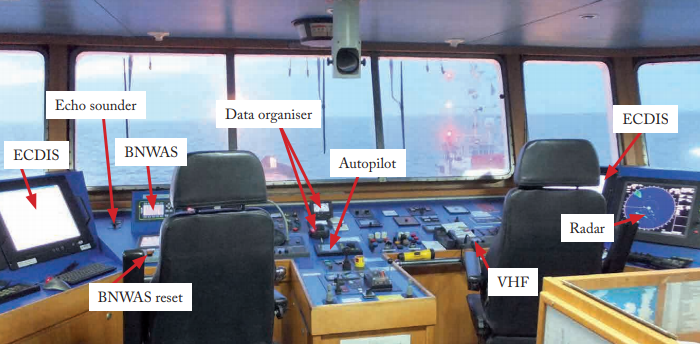In the latest edition of its Safety Digest, UK MAIB describes a grounding of a small bulk carrier on a sandbank. The vessel had been following a planned track in the ECDIS, but the ECDIS alarms had been turned off. The ship remained aground for 6 days and was refloated by salvors.
The incident
The second officer had taken over the bridge watch from the master at midnight. The vessel was heading 146˚ in autopilot at 11kts, but during the watch handover the master told the oncoming OOW to shorten the planned route by moving it further to the west.
After the master retired to his cabin, the OOW amended the passage plan by ‘dragging and dropping’ several waypoints on the ECDIS. The route was checked visually but the results of the automatic check route function were not inspected. The vessel’s heading was then adjusted to follow the revised route. The OOW then settled into the watch accompanied by a lookout. Both were seated, with the OOW able to monitor the ECDIS and the ARPA displays. Traffic was light and the visibility was good.
About 2½ hours into the watch the vessel’s speed suddenly and rapidly decreased. The OOW did not know why, and immediately called the master and chief engineer. The OOW also ‘zoomed in’ on the ECDIS display. The chief mate and many of the crew were also woken by the change in the ship’s movement. When the master arrived on the bridge, he immediately realised that the vessel was aground, and put the engine telegraph to stop.
The grounding checklist was started and, as soon as the master was sure there was no water ingress, he attempted to manoeuvre clear of the shallows. But without success. The vessel remained aground until it was refloated by salvors 6 days later.
Subsequent inspection of the ECDIS indicated that the system’s ‘safety frame’ or ‘look ahead’ was inactive and that its audible alarm had been disabled. Consequently, no alarm was generated when the vessel passed over the safety contour (10m).
Lessons learned
- In recent years, a number of groundings have resulted from revised passage plans not being checked thoroughly. Although changes to such plans are frequently made at short notice and less than ideal situations, the bypassing of the usual checks and controls is fraught with danger. Shortcuts might be expedient, but a second pair of eyes remains priceless.
- Amending a route in ECDIS is very quick and easy, but checking that the revised route is safe still takes time. It is important that visual checks are made on larger scale ENCs and that the automatic check is utilized.
- Many of the alarms that ECDIS generates can appear unhelpful in pilotage waters where close attention is being paid to a vessel’s position and likely risks. In such circumstances, the alarms do not tell a master or an OOW something they are not already aware of. However, in coastal and open waters, where focus on the effective monitoring of the ship’s position is generally reliant on the bridge watchkeeper alone, the ECDIS alarms are potential lifesavers. Preventing alarms from being an annoyance and a distraction, but having them available when needed, relies on their effective management. Disabling them completely is not the answer.
- Research has shown that alertness and performance tend to be at their lowest in the early morning when the human circadian rhythm is synchronised with the normal pattern of daytime wakefulness and sleep at night. This puts the 0000-0400 watchkeepers at most risk, particularly when the watch is very quiet and boring. Therefore, don’t remain seated for long periods, and do try to stay active.






























































I bet any money the boat does not have a Speed Log and the previous captain stuck a pin in the alarm pizo… blame the surveyor